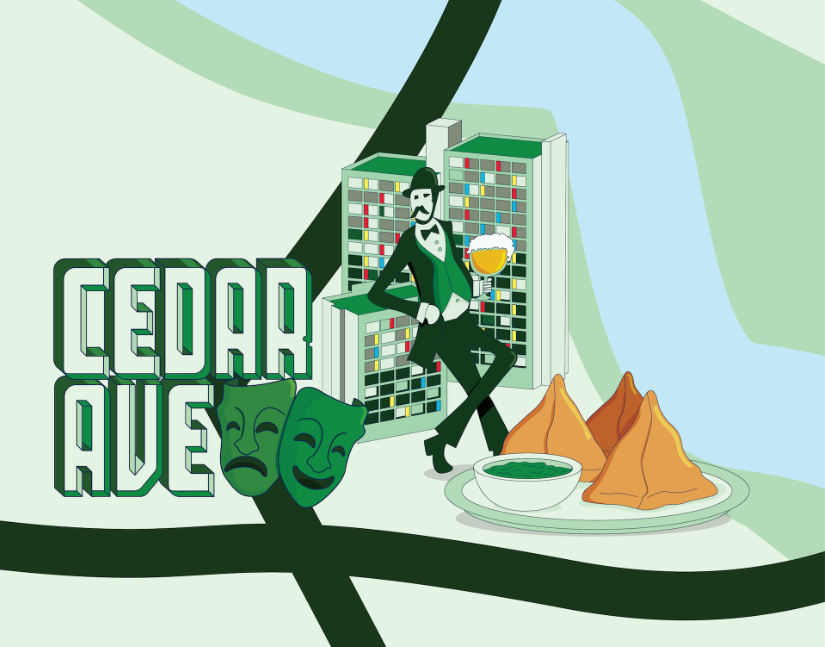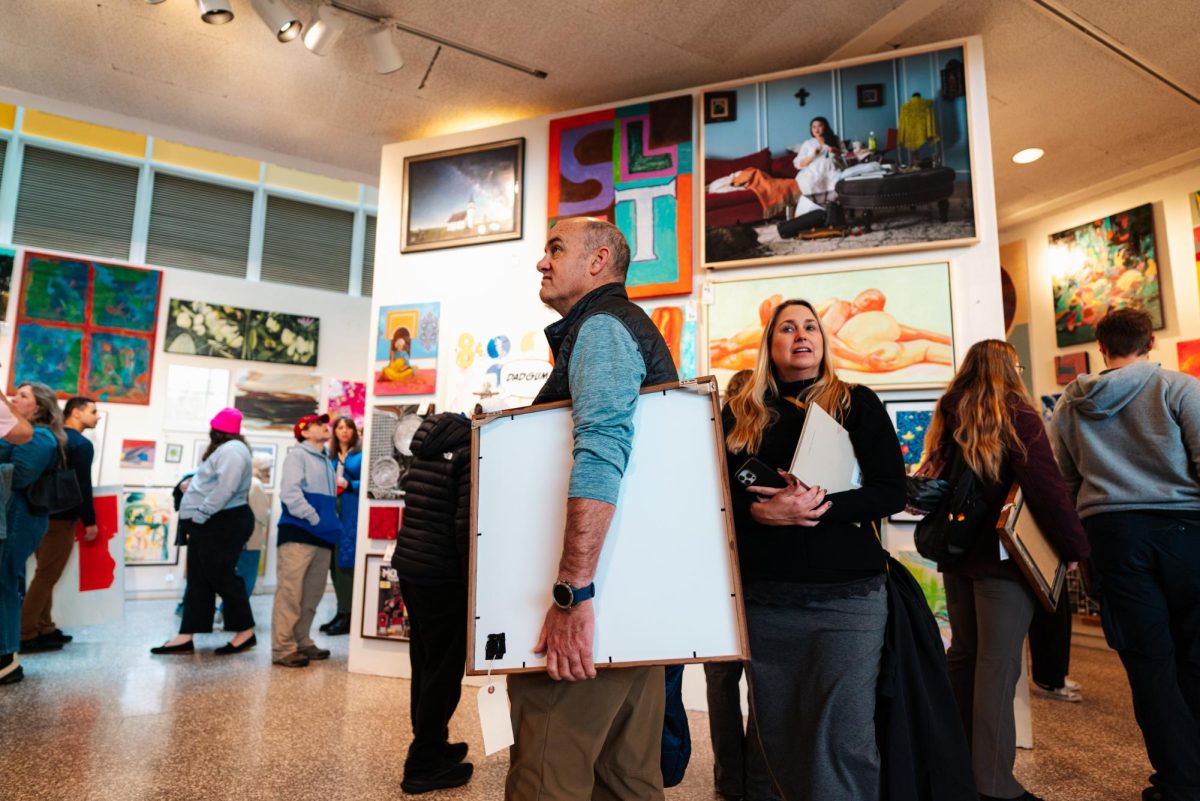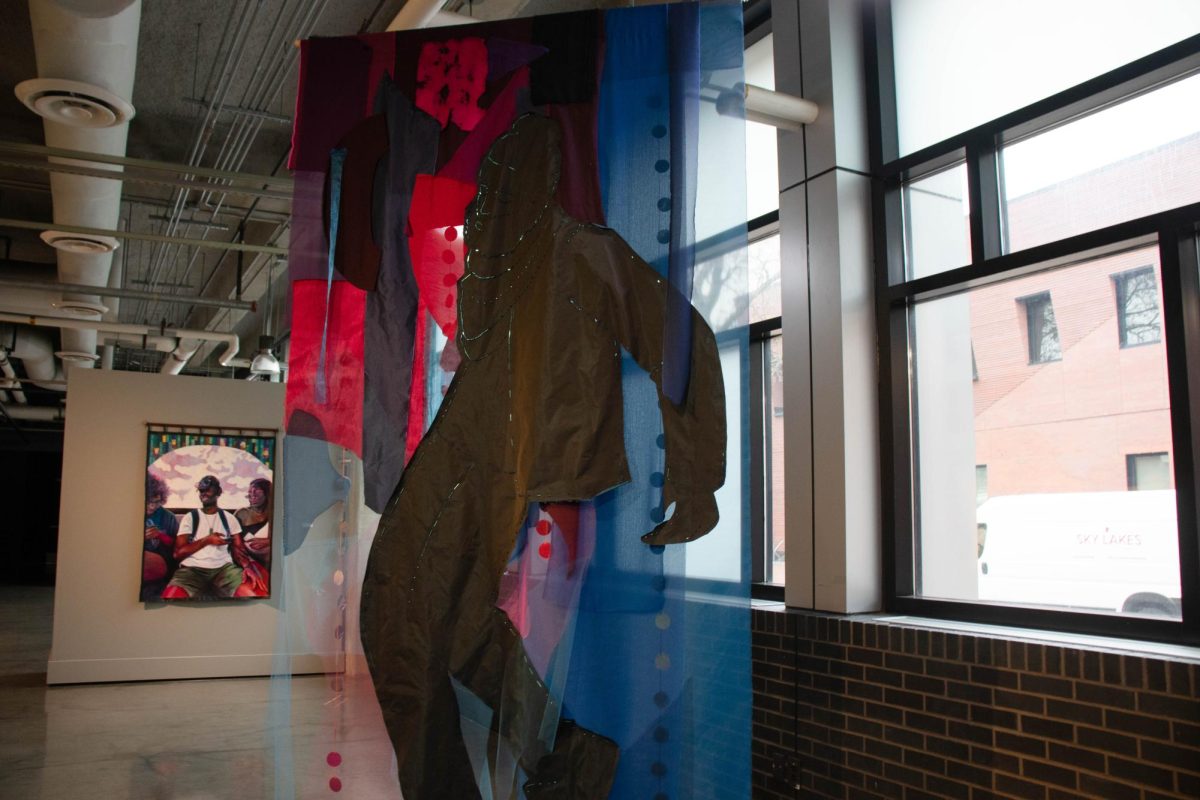For the last week and half, a 10-foot-tall red aluminum “A” has stood in the snow before the monochromatic, angular contours of the Regis Center for the Arts in the West Bank Arts Quarter on campus. The anomalistic construction, resting atop a five-by-10 foot trailer, figures prominently in “Critical Translations,” the current exhibition in the Katherine E. Nash Gallery that explores the “intersection between art and politics Ö between art and social engagement,” according to the introduction in the complimentary catalogue that accompanies “Translations.”
“The Big A,” by Peter Haakon Thompson, is at once a beacon for the oft forgotten gallery housed on the outskirts of the West Bank and a striking example of the dialogue created between the overt and the subtle approaches to socially engaging art the exhibition pursues.
“Translations” was initiated two years ago by 2006 MFA graduate Rachel Breen. Breen, along with Christine Baeumler and Alexis Kuhr, both assistant professors in the art department at the University, co-curates the exhibition.
The artwork they’ve chosen maximizes the gallery’s modest space, providing a provocative, conversational experience in the broad-ranging works themselves. One confronts Sue Coe’s haunting images of animal cruelty, capitalism and Iraq-influenced military corruption on one partition, and facing it, as if in address, is Edgar Heap of Birds’ more subtle “Building Minnesota.” His work is an eight-by-five matrix of aluminum plates (originally a 400-foot outdoor installation) with red print honoring 40 Dakota tribal citizens who were hanged between the years of 1862 and 1865 by the order of Presidents Abraham Lincoln and Andrew Jackson, and supported by citizens of Minnesota.
“The works speak for and inform each other,” said Breen. “But at the same time they don’t tell you what to think.”
“We didn’t want to be too heavy about this,” Baeumler said. “But we did want to make connections (for example) between the way the Iraq War and Vietnam have been represented in the media.”
Here Baeumler references the works on display of artists such as Camille Gage’s “War, Redacted” and Harrel Fletcher’s “The American War.” The former is a photographic series in which Gage exercised the Freedom of Information Act to present the flag-draped coffins of United States casualties from Iraq. And the latter is an aggregate of graphically violent, re-photographed images from “The War Remnants Museum” in Ho Chi Minh City. Both expose the two wars’ representations in American media as repressed products of censorship and ideological construction, further encouraging one to re-examine how our evolved relationship with the media has left us (mis)informed between the two eras.
“Critical Translations”
WHEN: 11 a.m. to 7 p.m. Tuesday through Saturday, through Feb. 15
WHERE: Katherine E. Nash Gallery, Regis Center for Art
TICKETS: Free
“Often one hears the criticism leveled at ‘political’ art, that it is always didactic and does not engage aesthetic concerns,” Baeumler writes in an e-mail.
And this critique appears to inform the exhibition’s balance. For example, the inclusion of Ed Pien’s suspended installation “Earthly Delights,” which invites one into a textural world rich in cool greens and blues and a warm, bold red, simultaneously excites and terrifies with imagery both beautiful and hellishly sublime.
But without a clearly identifiable set of charged and rhetorical signifiers, one is left entranced in a state of awe, even meditation.
Public Reception
What: Panel discussion about art and social change, featuring artists Sue Coe and Shana Kaplow and curator Don Russell from Provisions Library in Washington, D.C., as well as other artists in the show
WHEN: 3 to 5 p.m. panel, 6 to 8:30 p.m. reception, Friday
WHERE: Regis Center for Art
TICKETS: Free
“Ed Pien uses visual language in a very metaphorical way,” says Baeumler. And her comment resonates with Breen’s astute observation of the exhibition’s title, a comment that doubly serves to examine “Translation’s” ethos: “Critical thinking is the foundation of civic engagement, and part of what (artists) do is translate ideas, problems, questions and concerns into the visual.”
The breadth of issues maintained by “Critical Translations” also includes, among many others, poverty and youth in a video installation titled, “Endurance” by Jacqueline Tarry and Bradley McCallum, and the effects of global warming on Central Park in Andrea Polli’s online, audio/visual work, “Heat and the Heartbeat of the City.”
Jane Blocker, associate professor of art history, writes in an essay in the accompanying catalogue: “Perhaps the reason that so many people judge art’s political aspirations negatively is that they are predisposed to think of art as operating at a great distance from politics.” But what this exhibition so aptly translates is art’s inextricableness from politics and vice versa.
That “A” outside the gallery, whether standing for “art,” “academic excellence” or another association, could not more appropriately articulate that idea in a visual language on a college campus.







